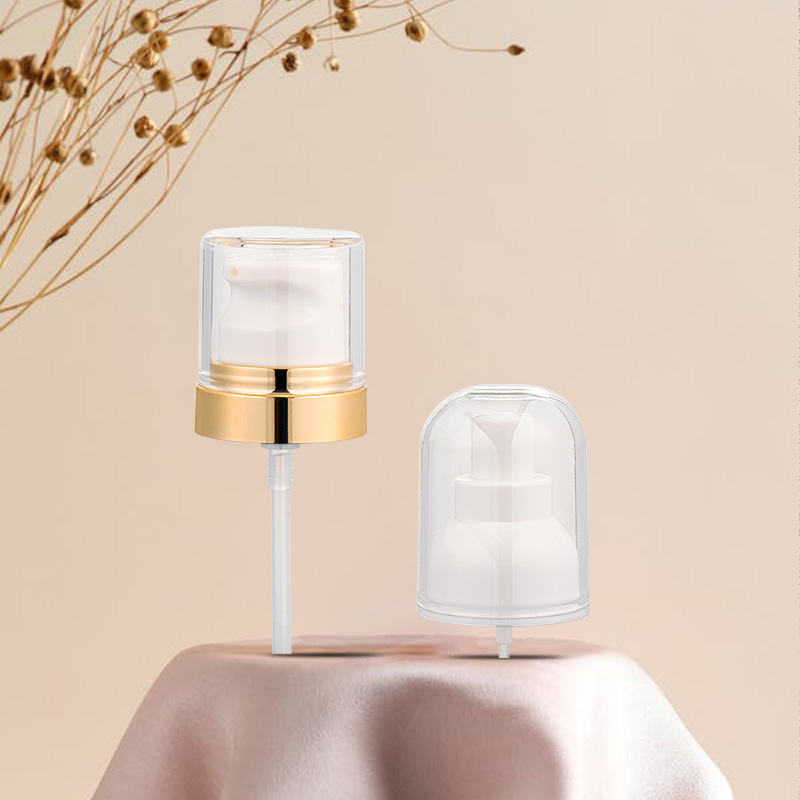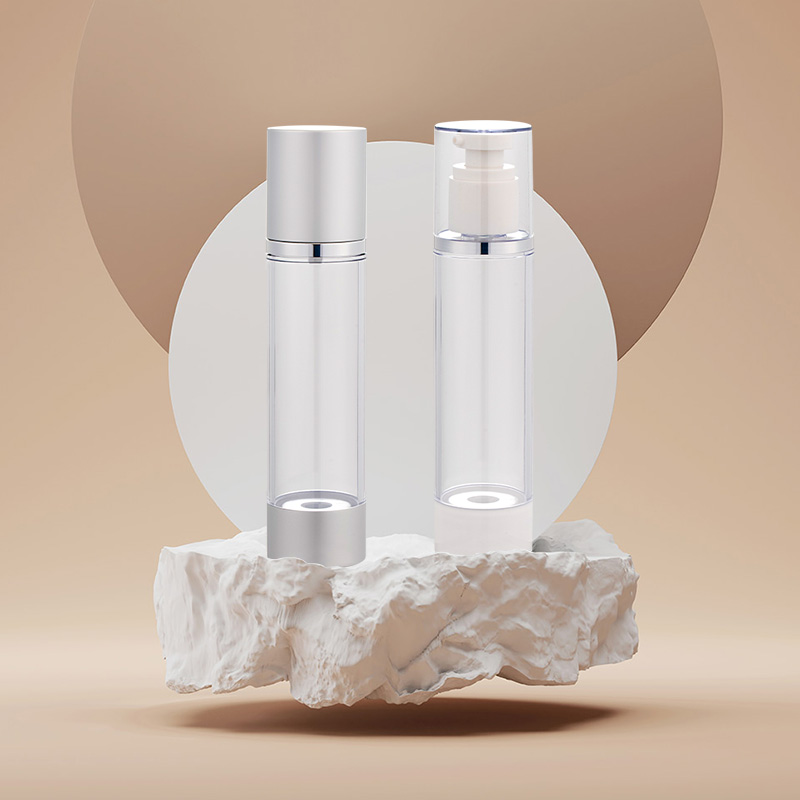Electrochemical Aluminum Spray Step Pump

Plastic emulsion pumps are widely used in industry for liquid delivery, especially in the fields of coatings, chemicals, food processing and environmental treatment. These pumps are usually used to deliver high-viscosity fluids such as emulsions, glues, coatings, paints, etc. Although plastic emulsion pumps have the advantages of corrosion resistance, light weight and low cost, various faults may still occur during long-term use. Understanding and promptly handling these faults can effectively improve the service life and working efficiency of the pump.
1. Pump body leakage
Fault manifestation:
Pump body leakage is one of the most common faults, usually manifested as liquid leakage around the pump housing, joints, seals or pump shaft. Leakage may cause liquid waste, environmental pollution or pump body damage.
Cause:
The sealing gasket is aged or damaged.
The sealing material is not suitable for the liquid being transported, resulting in seal failure.
The pump body connection bolts are loose or not tightened in place.
Long-term operation causes wear or corrosion of the seal.
Solution:
Check whether the sealing gasket, sealing ring or O-ring is intact. If damage is found, replace it with a new seal.
Ensure that all connecting parts are tightened to avoid leakage caused by loose bolts.
Use corrosion-resistant materials suitable for the liquid being transported to prevent seals from failing due to chemical corrosion.
Check and replace seals regularly to avoid wear caused by long-term use.
2. The pump cannot suck up liquid
Fault manifestation:
After the plastic emulsion pump is started, the pump cannot suck liquid into the pump, causing the pump body to run idle or not work properly.
Cause:
The liquid source is insufficient and there is not enough liquid in the suction port.
The pump is not properly primed, causing gas to enter the pump body.
The suction pipe or filter is blocked and liquid cannot enter the pump.
The pump shaft direction is incorrect or the pump device is damaged.
Solution:
Check the liquid source to ensure that the liquid is sufficient and can flow smoothly into the suction port.
Before starting the pump, ensure that the correct priming operation has been performed to eliminate the air in the pump body.
Clean the suction pipe and filter, remove blockages, to ensure that the liquid enters the pump smoothly.
Check whether the pump shaft is installed correctly and ensure that the various parts of the pump are not damaged or loose.
3. Excessive pump noise
Fault manifestation:
The pump makes abnormally loud noise during operation, which affects the working environment and may damage the equipment.
Cause:
Cavitation occurs in the pump, resulting in unstable liquid flow in the pump chamber.
The pump shaft or coupling is misaligned.
The internal parts of the pump are severely worn, resulting in unstable operation.
The pump is running at too high a speed.
Solution:
Check whether the suction pressure is sufficient to ensure sufficient liquid supply and avoid cavitation.
Adjust the pump shaft and coupling to ensure that they are aligned and firmly installed.
If the internal parts of the pump are severely worn, key components in the pump, such as impellers and bearings, should be replaced in time.
Check the operating speed of the pump to ensure that it runs within the appropriate range to avoid additional noise caused by excessive speed.
4. Insufficient pump flow
Fault manifestation:
Although the pump is working normally, the flow rate is significantly lower than expected, affecting production efficiency or processing capacity.
Cause:
The suction pipe is blocked or leaking, resulting in a decrease in the amount of inhaled liquid.
Some parts in the pump are worn, resulting in reduced pump efficiency.
The pump impeller or other flow parts are damaged or corroded.
The working pressure of the equipment is set too low, resulting in insufficient flow.
Solution:
Check the suction pipe and filter to ensure that there are no blockages and no leaks at the connection.
Check the key parts such as the pump impeller and pump body, and replace the worn parts if necessary.
Adjust the working pressure of the pump to ensure that it is within the normal working range.
Clean the inside and outside of the pump regularly to avoid reduced flow due to scale accumulation.
5. Excessive pump vibration
Fault manifestation:
The pump produces obvious vibration during operation, affecting the stable operation of the equipment and may even cause equipment damage.
Cause:
The pump speed does not match, resulting in an unbalanced working state of the pump.
The pump is not installed firmly and the support is uneven.
There are foreign objects or sediments in the pump, causing uneven loads.
The bearings or couplings of the pump are worn or damaged.
Solution:
Check the installation position of the pump to ensure that the pump body is installed firmly and supported stably.
Check whether there are debris or sediments in the pump and clean them in time.
Check the bearings and couplings of the pump and replace them if necessary.
Adjust the operating speed of the pump to ensure that it runs within the normal range.
6. Overheating of the pump
Fault manifestation:
The temperature of the plastic emulsion pump is too high during operation, resulting in overheating and even equipment damage.
Cause:
The liquid in the pump does not flow smoothly, resulting in increased friction inside the pump, which generates too much heat.
The pump shaft or other mechanical parts have serious friction, resulting in overheating.
The external ambient temperature of the pump is too high and the heat dissipation is poor.
Overload operation for a long time causes the pump to overheat.
Solution:
Check the fluid flow inside the pump to ensure that the liquid channel is unobstructed and there is no blockage or cavitation.
Regularly check the bearings and other moving parts of the plastic emulsion pump and replace worn parts in time.
Ensure that the cooling system of the pump works properly and install additional cooling devices if necessary.
Avoid running the pump for a long time under overload conditions and check the working status of the pump regularly.


What are the differences in performance between plastic emulsion pumps and traditional metal pumps?

How to correctly identify and purchase reliable quality Airless Bottle products
News Categories
Recent Posts


Dec 17,2025

Dec 10,2025